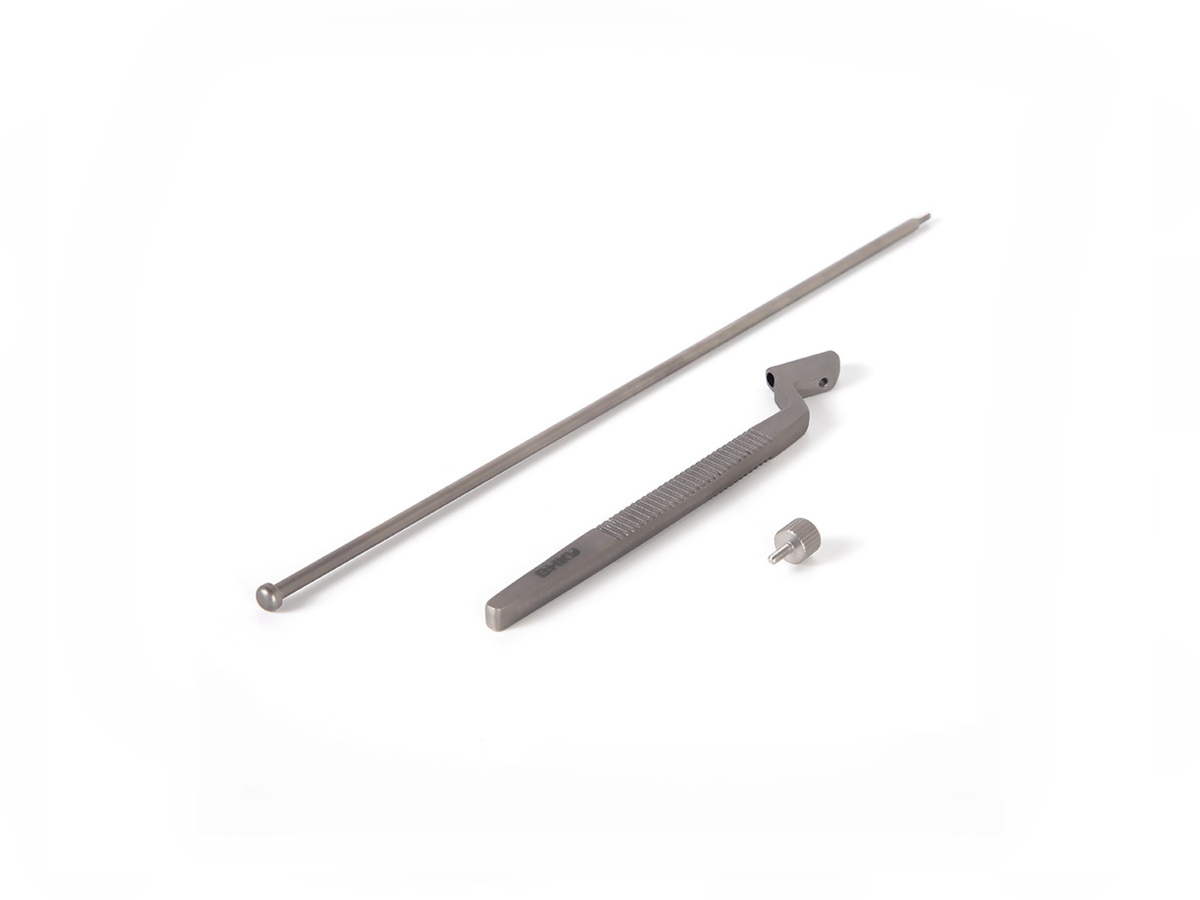Precision CNC Machining for Surgical Tools and Medical Instruments
Introduction to CNC Machined Surgical Tools and Instruments
Surgical tools and medical instruments require unmatched precision, exceptional reliability, and strict adherence to medical industry standards. Advanced CNC machining technology is pivotal in manufacturing critical medical tools, including surgical forceps, scalpels, clamps, endoscopic components, dental instruments, and specialized orthopedic tools. Commonly utilized materials include medical-grade stainless steel (SUS316L, SUS420), titanium alloys (Ti-6Al-4V), cobalt-chrome alloys, and high-performance polymers (PEEK), selected specifically for their biocompatibility, corrosion resistance, sterilization compatibility, and mechanical durability.
Utilizing specialized CNC machining services, manufacturers achieve precise geometries and surface finishes essential for meeting ISO 13485 quality standards and ensuring consistent surgical performance.
Material Performance Comparison for Surgical Tools and Instruments
Material | Tensile Strength (MPa) | Yield Strength (MPa) | Biocompatibility (ISO 10993) | Corrosion Resistance (ASTM F2129) | Typical Applications | Advantages |
|---|---|---|---|---|---|---|
480-620 | 170-310 | Excellent | Outstanding (>1000 mV breakdown potential) | Surgical forceps, clamps | Excellent corrosion resistance, sterilization compatibility | |
700-950 | 350-500 | Excellent | Excellent (>1100 mV breakdown potential) | Scalpel blades, cutting instruments | High hardness, exceptional wear resistance | |
950-1100 | 880-950 | Excellent | Superior (>1200 mV breakdown potential) | Orthopedic instruments, surgical handles | Lightweight, corrosion-resistant, biocompatible | |
90-100 | N/A | Excellent | Excellent (chemically inert) | Surgical handles, endoscopic instruments | Radiolucency, chemical resistance |
Material Selection Strategy for CNC Machined Surgical Tools
Selecting appropriate materials ensures reliable tool performance, patient safety, and compliance with medical standards:
Stainless Steel SUS316L provides superior corrosion resistance and sterilization compatibility, ideal for frequently sterilized surgical instruments such as forceps and clamps.
Stainless Steel SUS420 offers exceptional hardness (up to 50 HRC) and wear resistance, making it optimal for surgical blades and cutting instruments requiring sharpness and durability.
Titanium Ti-6Al-4V is lightweight, corrosion-resistant, and biocompatible, ideal for ergonomic surgical handles and specialized orthopedic instruments, reducing surgeon fatigue during lengthy procedures.
Medical-grade PEEK features excellent biocompatibility, radiolucency, and chemical resistance, making it perfect for instrument components in imaging-sensitive applications.
CNC Machining Processes for Surgical Tools and Instruments
CNC Machining Process | Dimensional Accuracy (mm) | Surface Roughness (Ra μm) | Typical Applications | Key Advantages |
|---|---|---|---|---|
±0.005 | 0.2-0.8 | Complex surgical handles, instrument jaws | Complex geometries, high precision | |
±0.005-0.01 | 0.4-1.2 | Instrument shafts, surgical screws | Precise rotational features | |
±0.002-0.005 | 0.1-0.4 | Cutting edges, scalpel blades | Ultra-precise finishes, sharp edges | |
±0.01-0.02 | 0.8-1.6 | Assembly holes, fixation points | Accurate hole placement, reliable alignment |
CNC Process Selection Strategy for Medical Instruments
Choosing optimal CNC machining processes ensures accurate instrument functionality, surgical reliability, and safety:
5-Axis CNC Milling is essential for manufacturing instruments with intricate features and ergonomic designs, ensuring precise fits and comfortable usage, within tolerances of ±0.005 mm.
CNC Turning provides precise rotational components such as surgical shafts and cylindrical fittings, crucial for maintaining dimensional accuracy (±0.005 mm) in handheld surgical instruments.
CNC Grinding achieves exceptional surface finishes (Ra ≤0.4 µm) and ultra-tight tolerances (±0.002 mm), critical for creating extremely sharp cutting edges for scalpel blades and precision surgical instruments.
Precision CNC Drilling guarantees accurate hole placement (±0.01 mm), essential for reliable assembly and fixation points on surgical tools and instruments.
Surface Treatment Performance Comparison for Surgical Tools
Treatment Method | Surface Roughness (Ra μm) | Biocompatibility (ISO 10993) | Corrosion Resistance (ASTM F2129) | Surface Hardness | Typical Applications | Key Features |
|---|---|---|---|---|---|---|
0.4-1.0 | Excellent | Superior (>1200 mV breakdown potential) | N/A | Stainless steel tools, instruments | Enhanced corrosion resistance | |
0.1-0.4 | Excellent | Excellent (>1300 mV breakdown potential) | N/A | Cutting instruments, surgical surfaces | Ultra-smooth, contamination-resistant surfaces | |
0.1-0.3 | Excellent | Outstanding (>1500 mV breakdown potential) | HV 1500-2500 | Surgical blades, high-wear instruments | Increased surface hardness, wear resistance | |
0.4-1.0 | Excellent | Excellent (>1000 mV breakdown potential) | HV 400-600 | Titanium handles, instruments | Biocompatible surfaces, improved durability |
Surface Treatment Selection for Surgical Instruments
Optimal surface treatments significantly enhance tool reliability, biocompatibility, and longevity:
Passivation ensures stainless steel instruments maintain superior corrosion resistance after repeated sterilizations, reducing contamination risk.
Electropolishing delivers ultra-smooth surfaces (Ra ≤0.4 µm), crucial for surgical instruments requiring exceptional cleanliness and reduced bacterial adhesion.
PVD Coating significantly improves hardness (HV 1500-2500), ideal for enhancing wear resistance and extending the service life of cutting tools and surgical blades.
Anodizing provides a durable, biocompatible surface layer (HV 400-600), essential for titanium surgical instruments subjected to frequent sterilization.
Typical Prototyping Methods for Surgical Instruments
CNC Machining Prototyping: Accurate functional prototypes (±0.005 mm) facilitate ergonomic and clinical testing.
Rapid Molding Prototyping: Enables fast production of realistic instrument prototypes for surgeon evaluation.
Metal 3D Printing (Powder Bed Fusion): Allows rapid prototyping of complex instrument designs (±0.05 mm accuracy), speeding up design validation and optimization.
Quality Assurance Procedures
CMM Inspection (ISO 10360-2): Confirms dimensional accuracy within ±0.005 mm.
Surface Roughness Testing (ISO 4287): Ensures compliance with strict surgical standards.
Biocompatibility Testing (ISO 10993): Validates safety and tissue compatibility.
Non-Destructive Testing (ASTM E1444, ASTM F601): Guarantees structural integrity and functionality.
ISO 13485 Certified Documentation: Ensures rigorous compliance, quality management, and traceability.
Related FAQs:
Why is CNC machining crucial for surgical instruments?
Which materials are best for CNC-machined surgical tools?
How do surface treatments enhance surgical instruments?
Why is prototyping vital in surgical instrument manufacturing?
What quality standards apply to CNC-machined surgical tools?

